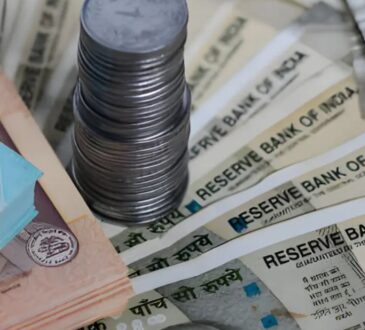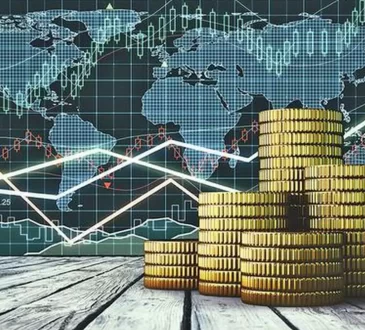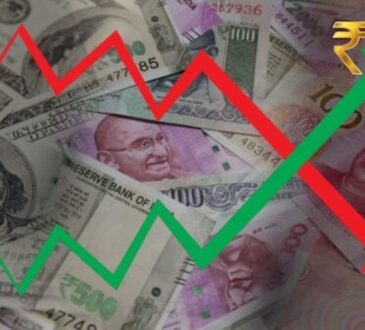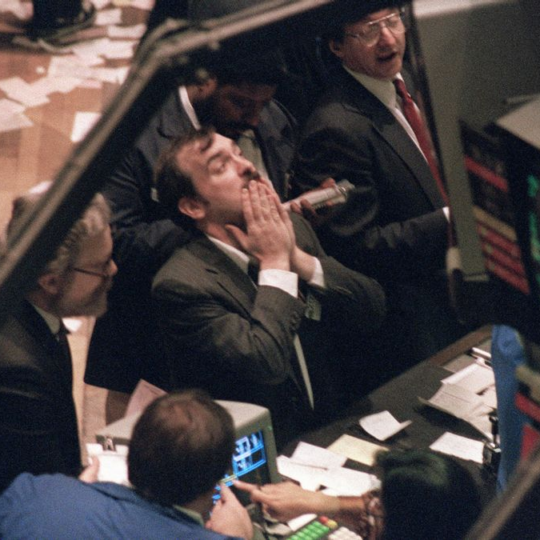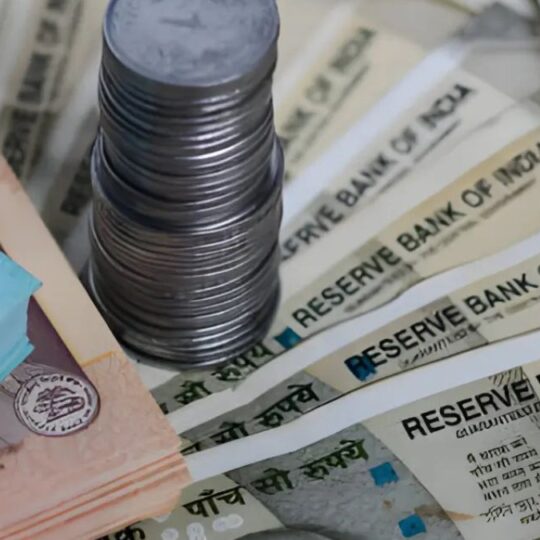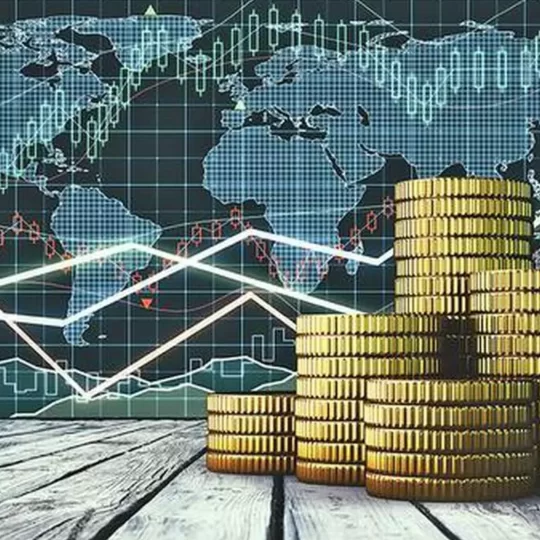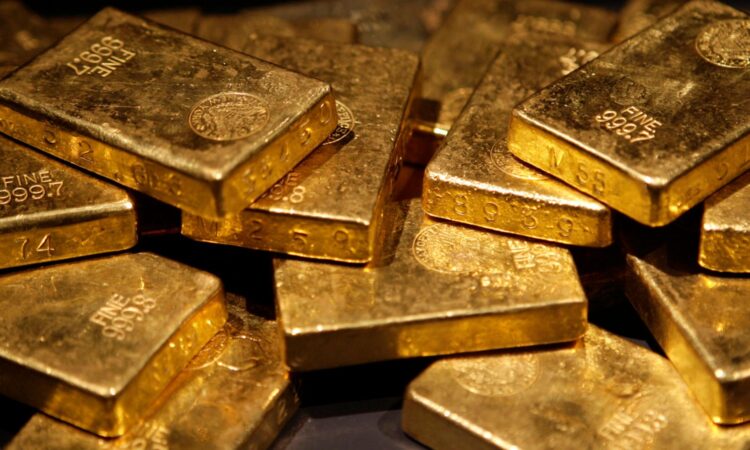
While it has not been immediately reflected in turbulence in financial markets, at least not yet, the escalation of US President Trump’s economic war against the rest of the world as he seeks to maintain the dominance of US imperialism is having an impact.
The Trump MAGA agenda has already sent a wrecking ball through the geo-political post-war order. This is exemplified in the remarks of the incoming German chancellor, Friedrich Merz, that it was necessary to pursue “independence” from the US because the American government was “largely indifferent to the fate of Europe.”
While the impact on the financial system is not so apparent, it is clear that beneath the surface, tensions and contradictions are building up. One of the clearest expressions is the escalation in the price of gold.
Since the beginning of 2024 it has increased by 44 percent, with an 11 percent increase this year. The gold price is now just below $3,000, a record high, with predictions that it could soon go to $3,500 or even higher.
Among the reasons cited for the increase is the uncertainty created by the sweeping tariffs being threatened against friend and foe alike by the Trump regime. As James Steel, precious metal analyst at the global bank HSBC, told the Financial Times: “When trade contracts, gold takes off. The more tariffs that go on, the more this is going to disrupt world trade, and the better it will be for gold.”
The drive for gold has led to scenes previously not previously imagined. Traders have been physically shifting gold out of London, the main trading hub for the precious metal, into New York. The rush has resulted in a weeks-long queue to get gold out of London vaults, upending the commitment by the London Bullion Market Association to make deliveries within two or three days.
Such has been the movement that the Bank of England governor, Andrew Bailey, had to offer the reassurance earlier this month that there was “still plenty of gold.”
In testimony to the UK Treasury Committee, he spoke about the gold exodus from London. “Please, this is not a big thing really. Gold doesn’t play the role it used to play. So if we had been having this discussion 100 years ago we’d have been in some very different world because we were on the gold standard.”
Such reassurances, however, do not address the question of why under the current system of fiat currencies, there has been a turn to gold in the recent period and why has it been led by a number of central banks. Fiat currencies prevailed after President Nixon cut the link between the US dollar and gold on August 15, 1971.
In a report on gold demand issued earlier this month, the World Gold Council, the main industry body, said gold demand in 2024 had hit a new record of $382 billion, including $111 billion just in the last quarter of the year.
The report said central bank demand and emerging market demand was the biggest driver of the increase, with purchases exceeding 1,000 metric tons of gold for the third year in a row.
“Geopolitical and economic uncertainty remains high in 2025 and it seems as likely as ever that central banks will once again turn to gold as a stable strategic asset,” the report said.
China and Poland have been among the major buyers and their demand is expected to continue.
While the Trump trade warfare is adding to economic and financial uncertainty, the rising demand for gold did not start with his election win and tariff blitz.
One of the key factors was the Biden administration’s freezing of $300 billion of the assets of the Russian central bank at start of the Ukraine war. Coupled with the exclusion of Russia from the international payments system, enforced because of the role of the US dollar as the global currency, this sent a shock through the global financial system.
Governments and their central banks were suddenly confronted with the reality that dollar supremacy meant that they too could be subject to similar sanctions if they crossed the path of the US.
In response to the events of 2022, initiatives have been undertaken, particularly by the BRICS group of countries—comprising initially Brazil, Russia, India, China and South Africa and since joined by a number of others—to try and devise an alternate payments system for trade and investments.
These measures have only been small scale so far, but they have attracted the ire of Trump and brought significant threats.
At the end of last month, Trump repeated the warning, he made in November.
In a post on his Truth Social platform, he said: “We are going to require a commitment from these seemingly hostile countries that they will neither create a new BRICS currency, nor back any other currency to replace the mighty US dollar, or they will face 100 percent tariffs.”
Any country that tried to replace the dollars should say “hello to tariffs, and goodbye to America.”
The maintenance of dollar supremacy is an existential question for US imperialism. It is the role of the US dollar as the global fiat currency that enables it to run up huge budget deficits in a way not possible for any other country.
Its significance was underscored by Trump during the election campaign when he said that losing dollar supremacy would by the equivalent of losing a war.
At the same time the gyrations of the Trump regime, are fuelling global uncertainty. On the one hand it is asserted that the high value of the dollar is one of the key factors in the trade deficits of the US and is undermining the US industrial base via cheaper imports. On the other hand Trump insists that dollar supremacy must be maintained, implying a stronger dollar, with tariffs pushing up its value in global currency markets.
The conflicting consequences of these policies, which the Financial Times characterised as “bizarrely contradictory,” are replicated with regard to crypto currencies. Trump has said he wants to make US the crypto capital of the world. Yet one of the stated aims of the crypto proponents is the development of a system operating outside the fiat currency system.
There are many immediate factors contributing to the gold price rise, including tariffs, interest rate rises, inflation, concerns over the stability of US government debt now at $36 trillion, and rising as well as greater geo-political uncertainty including the threat of world war.
But these proximate causes have the character of an initial expression of a deeper process rooted in the very nature of the capitalist monetary and financial system.
Bourgeois economists, along with many who consider themselves to be Marxists, have dismissed Marx’s analysis of the commodity (gold) basis of the monetary system as belonging essentially to the 19th century. The final blow to its validity, they say, came when the system of fiat currencies was established after President Nixon removed the gold backing from the US dollar on August 15, 1971.
In putting forward these claims, they never explain why central banks continue to hold gold and why they have been acquiring it in recent times.
The fundamental difference between gold and all fiat currencies, including the US dollar, is that gold is a commodity produced by human labour and does embody real value.
Marx never claimed that a system of fiat currencies and the system of credit erected upon it could not drive out gold and replace it even for a considerable period of time as has occurred since 1971.
In fact, he maintained that this was an inevitable tendency of capitalist development.
Credit, he wrote, being a social form of wealth “displaces money [that is gold] and usurps its position. It is confidence in the social character of production that makes the money form of products appear as something merely evanescent and ideal, as a mere notion.” (Marx, Capital Volume 3, Penguin, 707-708)
Capitalist production, he continued, “constantly strives to overcome this metallic barrier, which is both a material and an imaginary barrier to wealth and its movement, while time and again breaking its head on it.”
It is not possible to ascertain exactly how the contradictions in the fiat currency system will develop, but the rise in the price of gold amid concerns about the stability of the US dollar, the fiat currency in chief, are indications that the time when the capitalist financial system once again breaks its head may well be approaching.
Sign up for the WSWS email newsletter

